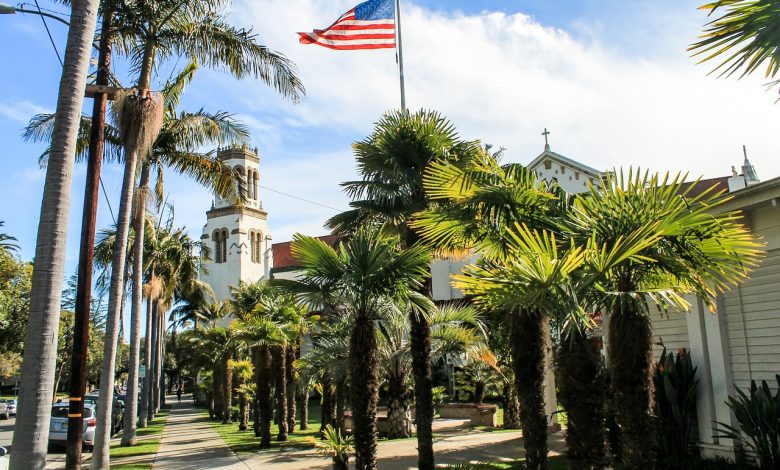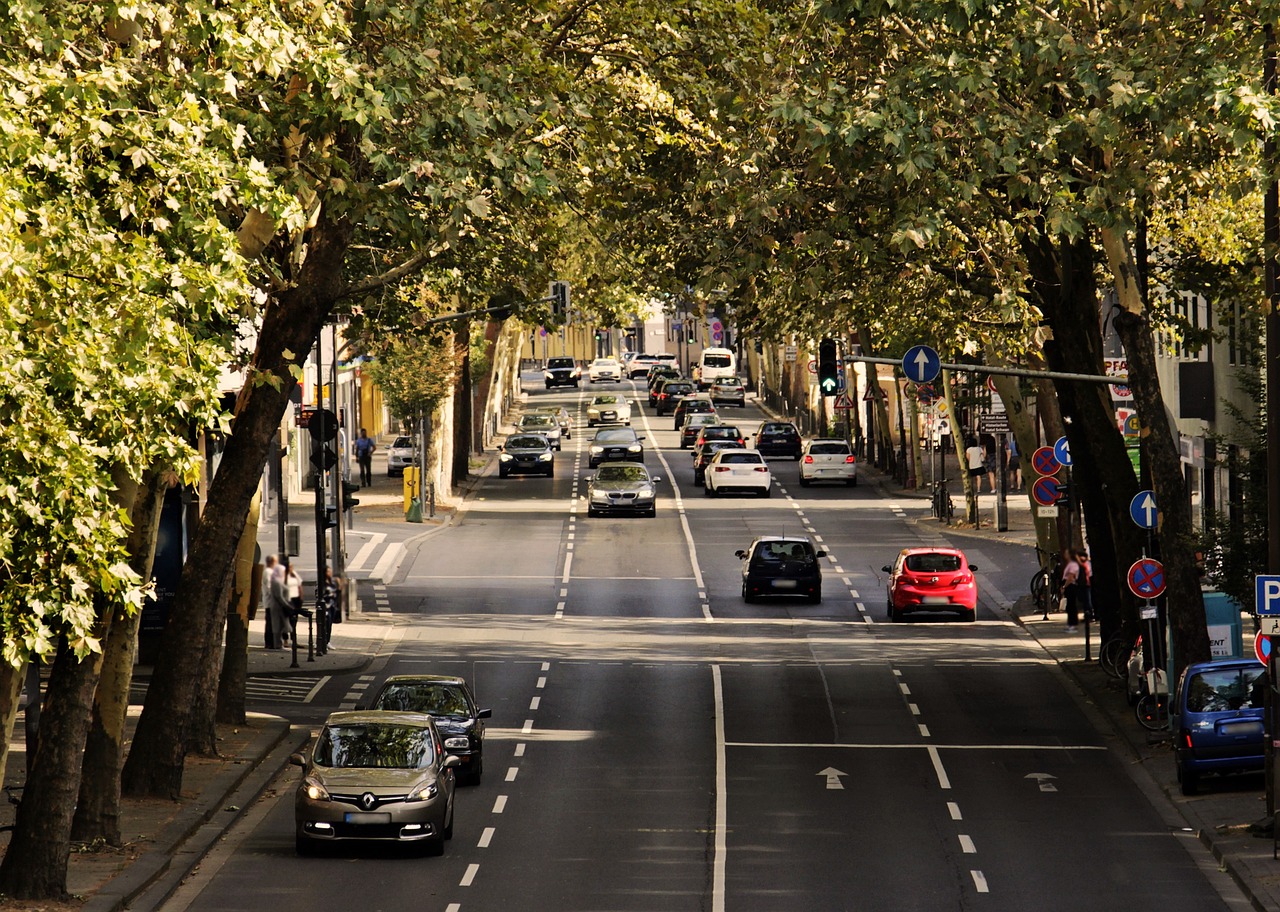More Walking, Less Oil: How One City is Looking to Reduce Fossil Fuel Consumption

Transportation and Fossil Fuels
Since the invention of the automobile, fossil fuels have been an essential component of the global transportation system. However, as concerns about climate change and air pollution have become increasingly relevant for many of the world’s political leaders, some cities have started to embrace alternative transportation systems in order to reduce fossil fuel consumption and combat climate change. Transportation systems that are powered by gasoline, diesel, and natural gas have both direct and indirect impacts on the environment. Vehicle tailpipe emissions are the most well-known impact. Nearly 27 percent of total U.S. carbon emissions can be attributed to the nation’s transportation system (Schwartz et al, 2014). Moreover, the U.S. Energy Administration says that 28 percent of annual U.S. energy consumption is used for transporting people and goods. In order to combat rising emissions from the transportation sector, the City of Santa Barbara, California has embarked on one of the country’s most ambitious plans to support walking instead of driving.

The City of Santa Barbara’s Efforts
The City of Santa Barbara developed a pedestrian master plan with a detailed and comprehensive arrangement of goals, diagrams, policy initiatives, and strategies to enhance and improve Santa Barbara’s already well-known image as a pedestrian-friendly city. This pedestrian master plan creates a vision of a future city that will be even more accessible to pedestrians by implementing a variety of strategies that will enable people to feel safe walking throughout all parts of Santa Barbara. Furthermore, this plan aims at benefiting not just the local residents of Santa Barbara, but all of the people who will visit the city. City leaders hope that increased accessibility and safety with a new system of pedestrian infrastructure will not only enhance local livability and economic vitality, but it will also lower rates of automobile dependency so that the car will become a choice of transportation rather than a necessity.
The pedestrian master plan contains phased policy and infrastructure recommendations that will encourage people to walk more, improve the overall walking environment, and increase safety for people with disabilities, as well as children walking to school. It will also increase the total number of pedestrian trips as a mode of transportation. Additionally, an emphasis is put on creating a more sustainable city by reducing automobile trips, improving the environment, and decreasing fossil fuel consumption. Overall, the plan effectively identifies public needs, involves residents and the surrounding community, and conveys the importance of walking as a mode of transportation. The plan also displays an analysis of the current state of pedestrian infrastructure, highlights a number of goals, and describes the process in which the plan will be funded and implemented.

Reducing Fossil Fuel Consumption
As American cities continue to evaluate opportunities to reduce fossil fuel consumption, the transportation sector is quickly becoming one of the most common targets. In addition to releasing greenhouse gas emissions, automobiles powered by gasoline and diesel emit hydrocarbons, carbon dioxide, carbon monoxide, nitrogen oxides, and other toxic particulate matter, which can exacerbate levels of air pollution (Frumkin, 2002). In order to address these concerns, policy makers have started to move forward with campaigns to ban fossil-fuel powered vehicles and adopt an active transportation system similar to those found in the Netherlands. Santa Barbara is just one of many American cities that are starting to move forward with these types of plans.
Pedestrian Plan Composition
So what does a pedestrian master plan look like? Santa Barbara’s plan opens with a brief introduction about the history of city, the composition of its urban infrastructure, and the story of mobility within the city. The plan conveys how Santa Barbara was negatively affected by suburbia and the automobile, just like many other American cities during the post-war period of the 1950s and 1960s. However, in 1964, the city organized the Santa Barbara General Plan to highlight the importance of downtown vitality. After this short, yet interrelated history of the pedestrian system, the plan then focuses on the existing pedestrian facilities.
This next section provides a contextual analysis into present-day pedestrian activity within the city and also shows areas that lack adequate and safe pedestrian infrastructure. A diverse array of land use maps, U.S. Census data, pedestrian counts, pedestrian crash data, field studies, and public surveys are used to analyze the current pedestrian system. Even though Santa Barbara is already well-known for its pedestrian-friendliness, some areas of the city have been neglected. A thorough inventory of existing facilities points out the areas of the city that are deficient in safe and accessible walking facilities. Based on field research and public opinion surveys, neighborhoods have been prioritized with regards to the number of pedestrian upgrades that are needed. Furthermore, a detailed list of opportunities and constraints based on urban form, curb ramps, sidewalk continuity, speed of traffic, volume of pedestrian traffic, distance of pedestrian crossings, street lighting, and landscaping are conveyed to better identify community needs.

Goal Development
Within the pedestrian master plan, the City of Santa Barbara has listed primary goals of increasing walking for all residents and visitors in order to promote healthy citizens, strengthen the economy, and cut oil consumption. These goals are then divided into six different sections, which in turn, are then further broken-down to specifically address a variety of smaller goals. While fossil fuel supporters say that Santa Barbara’s political leaders are unfairly targeting their industry, the city is actually hoping to move forward with a number of other goals as well. Improving the pedestrian system to increase walking and establishing and enhancing safe routes to schools are examples of two supplementary objectives in addition to cutting oil consumption.
Protecting and expanding the system of pedestrian streets, creating public and pedestrian environments that are attractive, functional, and accessible to all people, and establishing an institutional foundation that will promote the implementation of the plan are some of the other goals that the city has in addition to reducing fossil fuel consumption. These goals were formed in response to the existing conditions that were outlined in a previous section of the plan. According to the North Carolina Physical Activity Policy Research Center, an effective pedestrian master plan should include clear goals and visions that aim to support well-being, livability, and safety, all of which had been mentioned in Santa Barbara’s pedestrian master plan.

Is it Realistic?
Will the development of a pedestrian master plan actually cut fossil fuel consumption from the transportation sector? City leaders insist that progress will be made towards this individual goal. In addition to providing clearly articulated goals, the pedestrian master plan also outlines how to measure, implement, and fund these objectives. To measure specific improvements for each goal, the plan lists detailed implementation and measurement information. For example, for the goal of expanding the network of sidewalks to increase walking rather than driving, the plan documents a systematic method of developing, renovating, and ranking the construction of new sidewalk infrastructure.
Current strategies and policies to support and monitor the implementation of these goals have been supported through the creation of the Sidewalk Infill Program. Moreover, information regarding the progress made to date has been clearly listed within the plan. In addition, the plan also includes a variety of maps and images so that residents can see exactly where the city will improve the walking environment for pedestrians. Besides simply presenting how these goals will be implemented, the pedestrian master plan also addresses funding options.
Funding is a crucial part of all planning projects. Santa Barbara’s pedestrian master plan discusses realistic funding options for all of the goals. It also specifically addresses the challenges of funding pedestrian projects. Since pedestrian improvement funds typically represent a very small portion of the total resources available for street-level improvements, the plan identifies a variety of other strategies and sources of funding from federal and state grants and by creating policies that require developers to fund and implement new sidewalks and crosswalks when constructing new developments. Additionally, Santa Barbara has created a capital improvement program that will require private property owners to pay additional pedestrian infrastructure fees, which is expected to generate the majority of funds needed to support the long-term sidewalk improvement costs. More resources are predicted to come from foundations, corporations and businesses, individual donors, and local fundraising drives.

Implementation Efforts
The City of Santa Barbara’s pedestrian master plan provides a comprehensive set of goals and visions that aim to increase the overall pedestrian friendliness of the city, which in turn, will reduce fossil fuel consumption. The structure of the plan is clear and cohesive and outlines how transportation and energy goals will be met. The materials and data are also presented in a way that would allow the average person to be able to understand all of the plan’s elements. Furthermore, the plan includes a section regarding a pedestrian design guide to add generalized guidelines about how to successfully plan, fund, and implement pedestrian infrastructure improvements.
City planners and transportation professionals say that oil consumption can be reduced through robust active transportation planning. Robust planning includes designing and maintaining safe, attractive, and accessible city streets. The overall composition of Santa Barbara’s pedestrian master plan is much more than simply a set of maps and tables. The current pedestrian system is thoroughly analyzed, visual displays are presented, projects are prioritized, goals are reasonable and clearly articulated, public participation is involved, funding strategies are discussed, and advocacy campaigns are planned. Taking everything into account, city planners from around the country have looked to Santa Barbara as a city that is on the cusp of reducing future fossil fuel consumption through its transportation investments.

The Big Picture
Santa Barbara has created an effective, straightforward, and readable pedestrian master plan that aims to encourage more citizens to walk rather than drive. As cities around the world have continued with efforts to move away from fossil fuel-powered transportation, the internal combustion engine continues to become a main target of governmental efforts focused on limiting global impacts from climate change. Policymakers from Athens, Madrid, Paris, and Mexico City have revealed similar plans supporting active modes of transportation while simultaneously putting more restrictions on fossil fuel-powered cars and trucks by as soon as 2025 (Coren, 2018). These efforts have oil and gas companies worried that their fuels may soon become obsolete.
Even though Santa Barbara is confident that its pedestrian master plan will result in less oil consumed, it does not aim to completely eliminate fossil fuels from its transportation system. Since the American system of mass motorization is one of world’s most carbon-intensive transportation systems in the world, city planners and policy makers agree that it will take many decades before cities are able to completely remove fossil fuels from their roadways through initiatives related to electric vehicles and the expansion of active transportation infrastructure. However, even though it may be many decades before fossil fuels are removed from the global transportation system, fossil fuel interest groups supported by the Koch brothers and Exxon Mobil have already started a war against efforts to eliminate fossil fuels from transportation systems. Through nationwide multimillion-dollar promotional campaigns, these organizations have started a battle to obstruct sustainable transportation efforts all around the country.
Sources
Bade, G. (2019). “The oil industry vs. the electric car.” Politico.
City of Santa Barbara. (2018). “Pedestrian Master Plan.” City of Santa Barbara Public Works Department.
Coren, M. (2018). “Nine countries say they’ll ban internal combustion engines. So far, it’s just words.” Quartz.
EIA. (2018). “Use of Energy Explained: Energy use for Transportation.” U.S. Energy Information Administration.
Frumkin, H. (2002). “Urban Sprawl and Public Health.” Emory University. 117(3): 201–217.
Schwartz, j., et al. (2014). “Climate Change Impacts in the United States.” U.S. Global Change Research Program.
Suzuki, D. (2018). “SUVs and Trucks Nullify Car Efficiency Gains.” EcoWatch.



